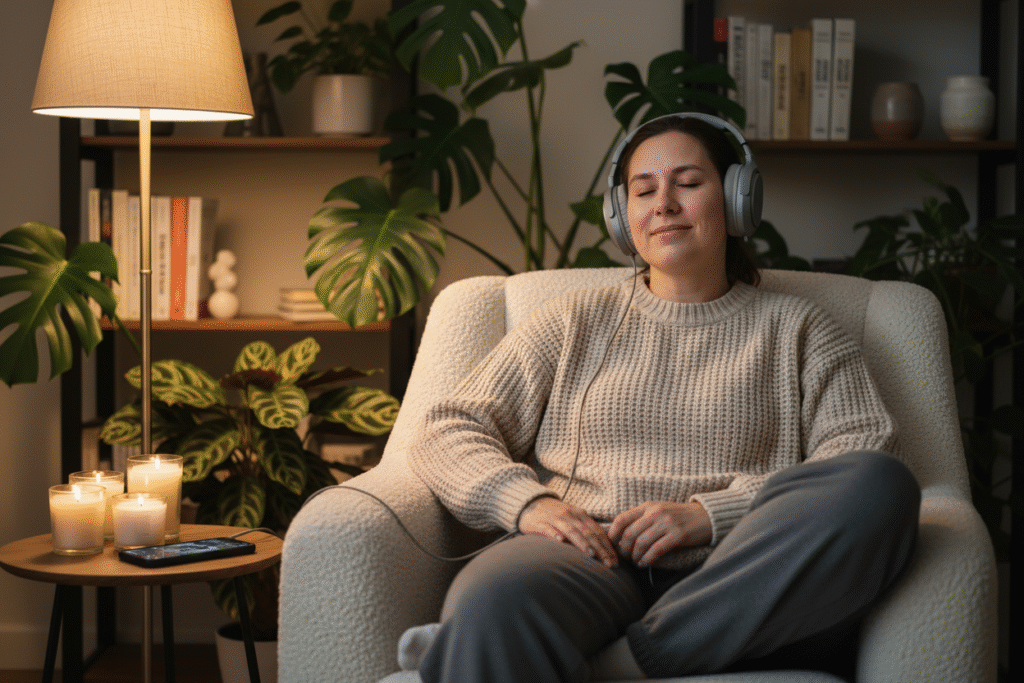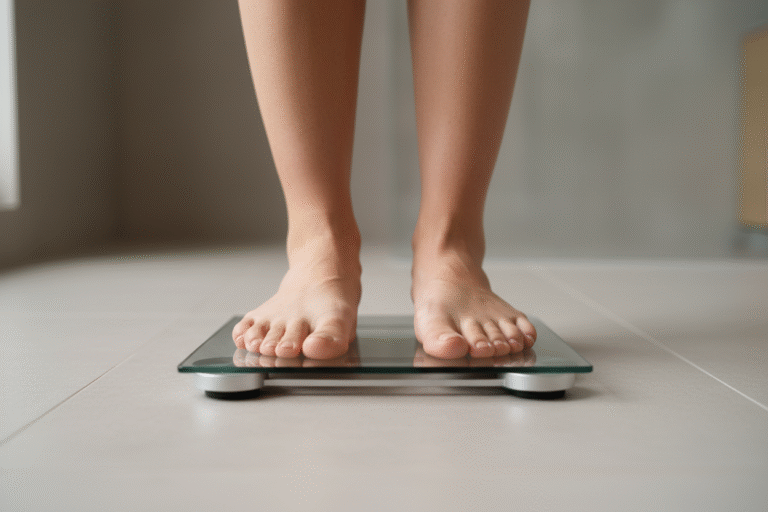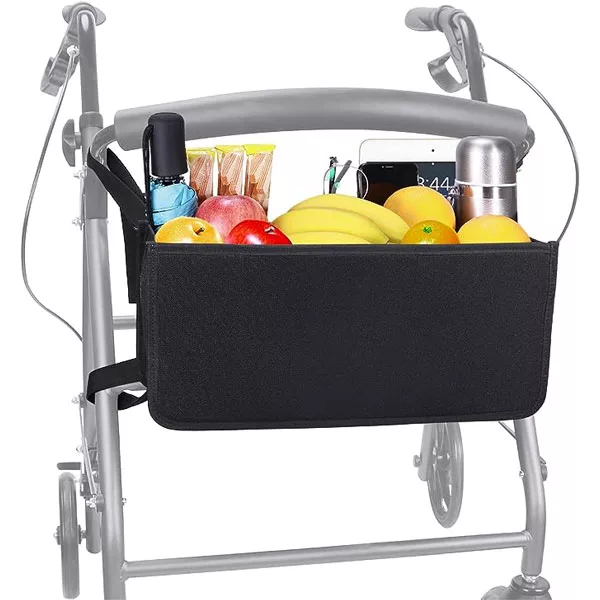Natural Ways to Calm Down: Your Guide to Finding Peace Without Pills or Panic
Discover simple, real‑life natural ways to calm down fast, reset your nerves, and feel like yourself again—without meds, fancy gadgets, or guilt.
Look, I’ll be straight with you: for a long time, my version of “calming down” was locking myself in a bathroom, staring at my reflection, and counting to ten while my heart tried to claw its way out of my chest. Shockingly… that didn’t fix much.
If you’re reading this at 2 AM because your brain refuses to hit the off switch, or you just snapped at someone you actually love because your stress levels went full volcano, I see you. You’re not dramatic. You’re human.
We live in a world where you can get ten stressful updates before breakfast—email, news, group chats, your bank app politely reminding you that life is expensive. And yet nobody sat us down and said, “Here’s how to calm your nervous system without spiraling or pretending you’re fine.”
The good news? There are natural ways to calm down that don’t involve dropping hundreds on therapy you can’t afford this month, buying every “relaxation” supplement TikTok throws at you, or forcing yourself to become the kind of person who meditates at sunrise on a yoga mat that costs more than your shoes.
(If that’s you, I’m happy for you. But also slightly intimidated.)
Over the years—through trial, error, late‑night anxiety, and the occasional “I need five minutes alone in my car before I go back inside” moment—I’ve learned this: calming down is not about becoming perfectly chill. It’s about having a handful of tools you can reach for when life starts shouting.
And the coolest part? Science actually backs this stuff up. For example, a 2018 paper in Frontiers in Psychology found that practicing basic stress‑reduction techniques lowered cortisol (your main stress hormone) and helped people feel more in control of their emotions. Which is another way of saying: no, you’re not doomed to be “the anxious one” forever.
So let’s walk through some natural ways to calm down that don’t just sound good online, but actually work when you’re in the thick of it.
Understanding Why We Need Natural Ways to Calm Down
Before we jump into the how, it helps to know what’s going on under the hood—otherwise it just feels like your body is randomly betraying you for fun.
Your nervous system has two main modes:
- Sympathetic: fight‑or‑flight (emergency mode)
- Parasympathetic: rest‑and‑digest (peace mode)
When you’re stressed, your sympathetic system slams the big red button. Heart racing. Breathing goes shallow. Muscles tense. Your body thinks it’s saving you from a tiger when in reality… it’s just an email that says “circling back.”
Modern life is basically a highlight reel of things your brain interprets as danger:
- That unread message from your boss.
- A weird tone in your friend’s text.
- Your card getting declined once at the grocery store.
Individually, they’re small. But stack enough of them, day after day, and your system starts living in permanent “bear attack” mode.
The American Psychological Association has been saying for years that most adults are feeling very real physical symptoms of stress—headaches, jaw pain, fatigue, anxiety, sleep problems. It’s not in your head (well, it is, but also in your muscles, gut, and immune system too).
That’s why natural ways to calm down matter so much. You’re not just “trying to relax.” You’re teaching your body how to flip back from panic mode to peace mode on purpose. You’re basically re‑training an overcaffeinated security guard who pulls the fire alarm every time someone burns toast.
The Breathing Techniques That Actually Work
Yes, everyone says “just breathe,” and yes, that can sound wildly unhelpful when you’re freaking out. But the truth is, certain ways of breathing can flip your nervous system out of crisis mode faster than most people realize.
Think of these as “stealth” natural ways to calm down—you can do them in a meeting, on a bus, on your couch, even in line at Target.
Box Breathing: The Navy SEAL Method
Box breathing is famously used by Navy SEALs in actual life‑or‑death situations. Which makes it feel slightly overqualified for “my inbox is overwhelming,” but here we are.
Here’s how it goes:
- Inhale through your nose for 4 counts.
- Hold your breath for 4 counts.
- Exhale slowly for 4 counts.
- Hold again for 4 counts.
- Repeat for a few minutes.
The first time I tried this, I felt dramatic and a little silly. Then, about 60 seconds in, I realized my heart wasn’t doing that loud thumping thing anymore. I wasn’t magically zen, but I also wasn’t in full internal meltdown. Progress.
Research on slow, controlled breathing shows it activates the parasympathetic nervous system—your body’s “calm it down” branch—within minutes. It’s one of the simplest natural ways to calm down when you feel your anxiety switching from “mildly annoying” to “uh‑oh.”
The 4‑7‑8 Technique
This one comes from Dr. Andrew Weil, and if box breathing is like a reset button, the 4‑7‑8 method is more like gently pulling down the dimmer switch on your nervous system.
Here’s the pattern:
- Breathe in through your nose for 4 seconds.
- Hold your breath for 7 seconds.
- Exhale through your mouth for 8 seconds, like you’re slowly blowing out a candle.
The long exhale is what does the magic—it tells your vagus nerve, “Hey, we’re not being chased. You can stand down now.”
I use this before bed when my brain is giving a TED Talk I definitely didn’t invite. I’ve also used it before tough conversations and big presentations. One time I did it in a bathroom stall before walking into a room full of people, and I swear I walked out about 30% calmer and 50% less sweaty.
Is 4‑7‑8 breathing going to solve your entire life? No. But as far as quick, natural ways to calm down go, it’s one of my ride‑or‑dies.

Movement: The Underrated Stress-Buster
Here’s a fun fact nobody mentioned in health class: sometimes the fastest way to quiet your mind is to move your body—gently, not in a punishing “I must get shredded” way.
Your body was built to move. When stress jacks up your system, movement gives that energy an exit instead of letting it spin in circles.
Walking It Off (Literally)
Walking might be the most underrated of all the natural ways to calm down. And no, I don’t mean doom‑scrolling while half‑jogging on a treadmill.
I mean: shoes on, phone mostly away, go outside (if you can) and just… walk.
- Notice the trees or buildings.
- Feel your feet hitting the ground.
- Let your thoughts wander without trying to “productivity hack” the moment.
Stanford researchers found that walking boosts creative thinking and helps decrease anxiety. When you walk, you:
- Change your environment (which your brain loves),
- Get into a rhythmic, repetitive motion (oddly soothing), and
- Give your mind something mildly interesting to do besides replay that argument from three years ago.
Some of my best ideas and “oh, it’s actually not that big a deal” moments have happened mid‑walk. There’s something about physically moving forward that makes problems feel less like walls and more like speed bumps.
Also, it’s hard to fully panic and gracefully avoid dog poop on the sidewalk at the same time. The brain has limits.
Shaking It Out
Okay, this one sounds ridiculous until you try it. Stand up and literally shake your body—arms, legs, shoulders, hands, like you’re a wet dog or a cartoon character who just got electrocuted (in a safe, non‑dramatic way).
Do it for 30 seconds to a minute. You’ll feel awkward. Then you’ll probably feel better.
Animals do this constantly. Watch a dog after something stressful—they shake like they’re trying to reset their whole system. Trauma expert Peter Levine talks a lot about this: shaking naturally helps discharge stored stress.
I started doing this after tense calls or when my brain felt like an overfull inbox. I’d hang up, stand up, shake everything out, and then sit back down feeling at least two notches calmer. Is it glamorous? Absolutely not. Is it one of the most underrated natural ways to calm down? 100%.
The Power of Cold (Yes, Really)
Cold is not cozy. But it is wildly effective.
If you’ve ever splashed cold water on your face after crying and felt slightly more human afterward, you’ve already used one of the simplest natural ways to calm down.
The Cold Water Face Splash
When you’re overwhelmed, head to the sink. Turn the tap cold—not “kinda cool,” actually cold. Splash your face several times or press a cold, wet washcloth over your cheeks and eyes.

This triggers something called the mammalian dive reflex. Your body thinks, “Oh, we’re going underwater? Better slow the heart rate and protect the important organs.” That reflex nudges you out of full‑blown panic.
Research in Physiology & Behavior and related journals has shown that short bursts of cold exposure can reduce stress hormones and improve mood. You don’t have to be the person taking ice baths at 5 AM. Just a cold splash for 30 seconds can shift your state.
I keep a gel ice pack in my freezer specifically for this. When anxiety shows up and starts unpacking its suitcase, I grab the ice pack, press it gently on my face or neck, and stay there for a minute. It’s not comfortable, but it pulls me out of my head and back into my body fast.
Of all the natural ways to calm down quickly, this one is very “emergency brake”—a little jarring, very effective.
Grounding Techniques: Getting Out of Your Head
Anxiety loves the future. Grounding pulls you back into right‑now, where things are usually less catastrophic than your brain is insisting.
These natural ways to calm down are quiet, subtle, and incredibly portable.
The 5‑4‑3‑2‑1 Method
Here’s how it works when you’re spiraling:
- 5 things you can see
- 4 things you can feel/touch
- 3 things you can hear
- 2 things you can smell
- 1 thing you can taste
You just start naming them, either silently or out loud:
“Okay… I see the lamp, the window, my phone, that plant that’s somehow still alive, and the mug on my desk. I feel my feet on the floor, the chair under me, my shirt on my shoulders, my hands on my lap…”
At first it feels almost too simple, but that’s the point. Instead of letting your brain sprint through worst‑case scenarios, you give it a small, doable task.
I’ve used this:
- In airport security lines,
- On bumpy flights,
- Sitting in a parked car trying to calm down before going inside somewhere.
Nobody knows you’re doing it. On the outside, you look like a person existing in a room. On the inside, you’re using one of the most practical natural ways to calm down your nervous system.
The Texture Trick
Pick a “calm object” you can carry with you—it might be:
- A smooth stone
- A fidget ring
- A fabric bracelet
- A stress ball
When anxiety hits, hold it and really notice it:
- Is it cool or warm?
- Smooth or rough?
- Heavy or light?
This pulls your focus out of the spinning thoughts and into a specific, present‑moment sensation. Anxiety lives in future what‑ifs. Texture lives in now. Your brain can’t fully occupy both at once.
It’s tiny, simple, and weirdly effective—one of those quiet little natural ways to calm down that you can keep in your pocket.
The Role of Sound and Music
Sound goes straight to your nervous system. That’s why certain songs instantly make you feel calm, hyped, sad, or nostalgic—sometimes all in the same playlist.
Used intentionally, sound can be one of the gentlest natural ways to calm down.
Binaural Beats and Frequency
Binaural beats sound fancy, but the experience is simple: you put on headphones, and each ear hears a slightly different tone. Your brain blends them into one pulsing rhythm that can nudge you toward relaxation.
A study in Frontiers in Human Neuroscience found that listening to binaural beats in theta ranges (around 4–8 Hz) helped reduce anxiety and increased feelings of calm.
Translation: some people can literally listen their way into a calmer state.
You can find “binaural beats for relaxation” playlists on YouTube or apps. I typically use them when I’m working and feel my stress spiking—one of my low‑effort natural ways to calm down without stopping what I’m doing.
The Humming Technique
This might be the simplest tool in the entire list: hum.
Not a full concert. Just a low, steady “mmmmmmm” sound for 30–60 seconds.
The vibration from humming stimulates the vagus nerve, which sends “chill out” signals through your whole body. It’s like a massage for your nervous system from the inside.
I usually do this in the car or the shower, because otherwise I feel like a weirdo humming in the kitchen for no apparent reason. But every time I do it, I notice my shoulders drop and my breathing slow down a little. As far as natural ways to calm down go, this one’s ridiculously easy and surprisingly legit.

Progressive Muscle Relaxation: The Tension Release
You ever suddenly realize your shoulders have been up near your ears for… who knows how long? Same.
Progressive muscle relaxation (PMR) is one of those natural ways to calm down that also teaches you something: what tension actually feels like in your body, so you can catch it earlier next time.
Here’s the basic idea:
- Start at your toes.
- Tense the muscles for about five seconds.
- Then release and notice the difference.
- Move up: calves, thighs, glutes, stomach, chest, arms, hands, shoulders, neck, face.
It takes about ten minutes to go through everything slowly.
A review in BMC Psychiatry and other clinical work has shown that PMR can reduce anxiety and improve sleep quality. It’s like a mini massage you give yourself without needing another person or a spa gift card.
I started doing this on nights when my body felt like a coiled spring and I knew I wasn’t going to fall asleep just by “trying to relax.” Half the time now, I don’t make it to my face—I’m out somewhere around shoulders or jaw.
If sleep is where your anxiety loves to party, this might become one of your favorite natural ways to calm down.
The Unexpected Power of Creativity
Here’s something I didn’t expect: creative stuff isn’t just for “artsy people.” It’s secretly one of the most effective natural ways to calm down—especially when your brain feels overloaded.
And no, you do not have to be “good” at it. Zero people are grading you.
Coloring, Doodling, and Art
Remember being a kid and zoning out with crayons or markers? That feeling of quietly focusing on shapes and colors while everything else sort of faded out? Turns out, that wasn’t just nostalgia. That was your nervous system getting a break.
A study in the Art Therapy journal found that about 45 minutes of creative activity significantly lowered cortisol levels, even in people who didn’t see themselves as artistic.
When I feel stuck or overloaded, I’ll grab a pen and start doodling: lines, shapes, little boxes, nothing fancy. My notebook looks like the inside of a distracted person’s brain, which honestly… is accurate.
It’s not about creating something beautiful. It’s about giving your hands something to do while your mind steps off the hamster wheel for a bit.
Writing It Out
Some days, the only way out of my head is through my pen.
Not typing, not drafting a perfect journal entry for future anthropologists—just messy, handwritten brain dumps.
Research from places like the University of Rochester Medical Center has found that expressive writing about stressful experiences—just 15–20 minutes a day—can improve both mental and physical health.
I usually set a timer for 5–10 minutes and write whatever’s in my head. No censoring. No fixing. Just:
“I’m worried about X thing, and it feels like Y, and also I forgot to respond to that message and now I feel weird and—”
By the time the timer goes off, I don’t always feel amazing, but I almost always feel less tangled. And for me, “less tangled” is a win. Among the natural ways to calm down, this one costs you a few minutes and some ink.
Nature: The Original Therapy
If we’re talking natural ways to calm down, it would be rude not to invite actual nature to the party.
Humans weren’t built to spend all day under fluorescent lights, staring at rectangles and breathing recycled air. And your nervous system knows it.
Forest Bathing (Shinrin‑Yoku)
In Japan, there’s a practice called shinrin‑yoku, or “forest bathing.” You’re not literally bathing. You’re just walking slowly through nature, being present with what’s around you—no step goals, no workout metrics, no pressure.
A study in Environmental Health and Preventive Medicine found that people who spent time in forests had lower cortisol, blood pressure, and heart rate—classic signs that the body is moving into a calmer state.
I don’t have a magical mossy forest outside my door, but I do have a park with trees and a small trail. A few times a week, I’ll go there for 20 minutes, leave my phone in my pocket, and just… walk. Notice the light. The leaves. The occasional squirrel who looks like it’s judging me.
It’s become one of my non‑negotiable natural ways to calm down, especially when I feel like I’m living entirely in my head.
Bringing Nature Indoors
If getting outside regularly isn’t realistic for you, you can still borrow some of nature’s calm.
Research from Japanese universities has shown that even having a plant at your desk—or just taking a few minutes to look at greenery—can reduce stress markers. Literally just glancing at a little potted plant for three minutes helped people feel calmer.
I have a couple of succulents and one plant that I’m 70% sure is unkillable. When I feel overwhelmed, I’ll water them, wipe a leaf, or just stare at how the light hits them. It sounds tiny, but it’s like a micro break for my brain.
Sometimes, natural ways to calm down are less “grand lifestyle change” and more “you know what, I’m going to water this plant instead of opening another tab.”
The Social Connection Factor
I wish this part weren’t true, as a recovering “deal with everything alone” person—but here it is: we really do need other people.
Not always for advice. Not always for solutions. Sometimes just for the feeling of “Hey, I’m not carrying this alone.”
The Power of a Hug
A good hug is wildly underrated.
Physical touch releases oxytocin, a hormone that helps reduce stress and boosts feelings of safety. Research from Carnegie Mellon University even suggests that people who get more frequent hugs are better buffered against the negative impacts of stress and may even get sick less often under pressure.
A full 20‑second hug (which is longer than it sounds—time it sometime) can literally help calm your nervous system.
Obviously, you need to be hugging someone who’s comfortable with that. (Consent: still important.) But when it’s possible, a real, solid hug is one of the simplest, most human natural ways to calm down.
Talking It Out (The Right Way)
There’s venting—which can sometimes feel like shaking up a soda can—and then there’s grounded, intentional talking.
When I’m spiraling, I’ll text a friend something like:
“Do you have a few minutes? I don’t need solutions, I just need to say this out loud.”
That one sentence sets the tone. Then I talk. Sometimes I cry. Sometimes I ramble. But 9 times out of 10, by the end, the thing that felt absolutely enormous has shrunk down to a size my brain can handle.
You don’t need 20 friends for this. You need one or two safe people who get it. And you don’t have to share all the details if you’re not ready—just “hey, I’m having a hard brain day” can be a first step.
Among all the natural ways to calm down, honest connection might be the most vulnerable… and the most powerful.
Creating Your Personal Calm‑Down Protocol
Here’s the thing: you don’t need every one of these tools. You’re not building an anxiety museum. You’re building a tiny, powerful toolkit that actually fits in your life.
I like to think of it as a “calm menu.” When I feel that familiar tightness in my chest or the rush of “oh no oh no oh no,” I mentally scroll through options:
- Can I step outside for a five‑minute walk?
- Can I do box breathing for two minutes?
- Do I need to splash cold water on my face?
- Would it help to text a friend, or write everything out in a journal?
- Or do I just need to lie on the floor for a minute and stare at the ceiling like a Victorian heroine (my personal specialty)?
Not every tool will work every time. That’s okay. The point is that you have options—real, practical, natural ways to calm down that you’ve already tried and know at least sometimes help.
Start small. Pick one or two from this list that sound doable and low‑pressure. Try them this week. Notice what happens. Adjust. Add another one when you’re ready.
You’re not trying to become a perfectly calm fictional character. You’re trying to become a real person with better tools.
The Long Game: Building Resilience
All of these natural ways to calm down are powerful in the moment. But there’s also the “long game”—the stuff that makes your baseline less fragile so you don’t hit the red zone as often.
Things like:
- Moving your body regularly (even just walking).
- Sleeping as well as you reasonably can.
- Limiting caffeine if it makes you feel like a hummingbird on espresso.
- Staying connected to people who don’t drain you.
A review in JAMA Internal Medicine found that mindfulness meditation, practiced regularly, can reduce anxiety, depression, and even physical pain. Not because one session fixes you, but because repeated small moments of presence literally change how your brain wires stress.
I’m not suggesting you transform your entire lifestyle overnight. That’s a straight shot to burnout. But maybe you:
- Go to bed 20–30 minutes earlier.
- Add one short walk to your day.
- Do 4‑7‑8 breathing each night for a week.
These don’t feel dramatic. That’s the point. They’re quiet investments that make all your in‑the‑moment natural ways to calm down work even better.
When Natural Isn’t Enough
One last, important thing: all the natural ways to calm down in the world are not a substitute for professional support when you need it.
If your anxiety is running your life—if you’re having frequent panic attacks, can’t function the way you used to, or feel hopeless more days than not—please reach out to a doctor, therapist, or mental health professional.
There is zero shame in that. If anything, it’s one of the bravest things you can do.
I’ve sat on both sides of this. I’ve tried to “DIY” my mental health with podcasts and journaling only, and I’ve also had seasons where therapy and/or medication were absolutely necessary. Natural ways to calm down still helped—but they were part of a bigger support system, not the only support.
You’re allowed to use every tool available: breathing, movement, ice packs, therapy, meds, friends, naps. Whatever keeps you here and helps you feel more like you is valid.
Your Next Steps
If you’ve made it this far, first of all: impressive. Second of all: let’s keep this simple.
Don’t try to implement everything you just read. That’s the fastest path from “I want to feel calmer” to “I’m stressed about my calm‑down plan.”
Instead, pick one or two natural ways to calm down from this article that genuinely clicked for you. Maybe it was:
- Box breathing,
- The 5‑4‑3‑2‑1 grounding method,
- A short no‑phone walk,
- Or the cold water face splash.
Try one of them today. Not “someday.” Not “when life slows down.” Today, in whatever tiny way you can manage.
Then pay attention to how you feel—during, right after, and 10 minutes later. No judgment, just curiosity. You’re running a small experiment on yourself (in a good way).
I’ve been practicing these techniques for years now, and I still have messy, anxious days. The difference is, those days don’t own me the way they used to. I know I have options. I know what helps even a little. And a little bit of calm, repeated often, adds up.
You don’t have to become a person who never gets stressed. That person does not exist. You just need some reliable, natural ways to calm down when your brain and body go into “everything is on fire” mode.
Start small. Be kind to yourself. And remember: the goal isn’t perfection, it’s progress—and a life where stress shows up, but doesn’t get the final say.







